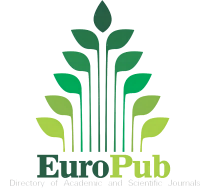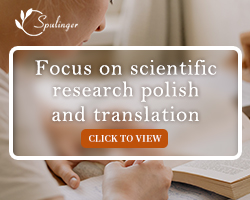Ursolic Acid Inhibits Breast Tumor Growth and Angiogenesis through Suppression the Expression of Multiple Adhesion Factors
DOI:
https://doi.org/10.62767/jecacm602.2688Keywords:
Ursolic acid, breast cancer, angiogenesis, metastasis, 4T1 cells, endothelial cells, tumor perfusionAbstract
Ursolic acid (UA), a natural pentacyclic triterpenoid, has been reported to exert anti-cancer and anti-angiogenic effects. However, its role in suppressing breast cancer metastasis through modulation of endothelial function and tumor microcirculation remains to be fully elucidated. In this study, we investigated the anti-tumor and anti-angiogenic effects of UA using both in vitro assays and an orthotopic mouse model of breast cancer. Cell viability, apoptosis, and cell cycle arrest were assessed in 4T1 cells. Tube formation assays were performed using HUVECs. Tumor progression, blood perfusion, and metastasis were evaluated in vivo using bioluminescence imaging, laser Doppler perfusion imaging (LDPI), and histological analyses. UA significantly inhibited 4T1 cell proliferation, induced G1-phase cell cycle arrest, and promoted apoptosis in a dose-dependent manner. In vivo, UA reduced tumor growth and metastasis, as evidenced by decreased bioluminescence signals and fewer metastatic lung lesions. UA also suppressed angiogenesis by inhibiting HUVEC tube formation and reducing local tumor perfusion in 4T1-bearing mice. Immunohistochemistry revealed that UA downregulated the expression of key adhesion- and angiogenesis-related molecules, including integrin β5, ESM-1, and ICAM-1, in both lung and tumor tissues. These findings demonstrate that UA effectively inhibits breast cancer progression and metastasis by targeting both tumor cells and endothelial function. Its ability to suppress angiogenesis and reduce adhesion molecule expression suggests UA is a promising candidate for anti-metastatic therapy in breast cancer.
References
American Cancer Society. Cancer Facts & Figures 2025. American Cancer Society; 2025.
Loibl S, Poortmans P, Morrow M, et al. Early breast cancer: ESMO Clinical Practice Guideline for diagnosis, treatment and follow-up. Annals of Oncology 2024; 35(2): 159-182.
Gradishar WJ, Moran MS, Abraham J, et al. Breast Cancer, Version 3.2024, NCCN Clinical Practice Guidelines in Oncology. Journal of the National Comprehensive Cancer Network 2024; 22(5): 331-357.
Welt A, Ritter C, Kümmel S, et al. Improved survival in metastatic breast cancer: results from a 20-year study involving 1033 women treated at a single comprehensive cancer center. Journal of Cancer Research and Clinical Oncology 2020; 146(6): 1559-1566.
Greenberg PA, Hortobagyi GN, Smith TL, et al. Long-term follow-up of patients with complete remission following combination chemotherapy for metastatic breast cancer. Journal of Clinical Oncology 1996; 14(8): 2197-2205.
Jones SE. Metastatic Breast Cancer: The Treatment Challenge. Clinical Breast Cancer 2008; 8(3): 224-233.
Weis SM, Cheresh DA. Tumor angiogenesis: molecular pathways and therapeutic targets. Nature Medicine 2011; 17(11): 1359-1370.
Liu ZL, Chen HH, Zheng LL, et al. Angiogenic signaling pathways and anti-angiogenic therapy for cancer. Signal Transduction and Targeted Therapy 2023; 8(1): 198.
Ikeda Y, Murakami A, Ohigashi H. Ursolic acid: an anti- and pro-inflammatory triterpenoid. Molecular Nutrition & Food Research 2008; 52(1): 26-42.
Iqbal J, Abbasi BA, Mahmood T, et al. Ursolic acid a promising candidate in the therapeutics of breast cancer: Current status and future implications. Biomedicine & Pharmacotherapy 2018; 108: 752-756.
Wang S, Wang N, Tan HY, et al. Ursolic Acid Inhibits Breast Cancer Metastasis by Suppressing Glycolytic Metabolism via Activating SP1/Caveolin-1 Signaling. Frontiers in Oncology 2021; 11: 745584.
Chan EWC, Wong SK, Chan HT. Ursolic acid: An overview on its cytotoxic activities against breast and colorectal cancer cells. Journal of Integrative Medicine 2019; 17(3): 155-160.
Yin R, Li T, Tian JX, et al. Ursolic acid, a potential anticancer compound for breast cancer therapy. Critical Reviews in Food Science and Nutrition 2018; 58(4): 568-574.
Sohn KH, Lee HY, Chung HY, et al. Anti-angiogenic activity of triterpene acids. Cancer Letters 1995; 94(2): 213-218.
Cárdenas C, Quesada AR, Medina MA. Effects of ursolic acid on different steps of the angiogenic process. Biochemical and Biophysical Research Communications 2004; 320(2): 402-408.
Gao JL, Shi JM, He K, et al. Tetrandrine Suppresses Cancer Angiogenesis and Metastasis in 4T1 Tumor Bearing Mice. Evidence-Based Complementary and Alternative Medicine 2013; 2013: 265061.
Bell R, Barraclough R, Vasieva O. Gene Expression Meta-Analysis of Potential Metastatic Breast Cancer Markers. Current Molecular Medicine 2017; 17(3): 200-210.
Fisher B, Bauer M, Wickerham DL, et al. Relation of number of positive axillary nodes to the prognosis of patients with primary breast cancer. An NSABP update. Cancer 1983; 52(9): 1551-1557.
Scholz D, Cai WJ, Schaper W. Contribution of arteriogenesis and angiogenesis to postocclusive hindlimb perfusion in mice. Journal of Molecular and Cellular Cardiology 2002; 34(7): 775-787.
Poole KM, Nelson CE, Joshi RV, et al. Quantitative optical imaging of vascular response in vivo in a model of peripheral arterial disease. American Journal of Physiology-Heart and Circulatory Physiology 2013; 305(8): H1168-H1180.
Khwaza V, Oyedeji OO, Aderibigbe BA. Ursolic Acid-Based Derivatives as Potential Anti-Cancer Agents: An Update. International Journal of Molecular Sciences 2020; 21(16).
Kornel A, Nadile M, Retsidou MI, et al. Ursolic Acid against Prostate and Urogenital Cancers: A Review of In Vitro and In Vivo Studies. International Journal of Molecular Sciences 2023; 24(8).
Sandhu SS, Kumar R, Abbas M, et al. Ursolic acid: a pentacyclic triterpenoid that exhibits anticancer therapeutic potential by modulating multiple oncogenic targets. Biotechnology and Genetic Engineering Reviews 2023; 39(2): 729-759.
Lugano R, Ramachandran M, Dimberg A. Tumor angiogenesis: causes, consequences, challenges and opportunities. Cellular and Molecular Life Sciences 2020; 77(9): 1745-1770.
Apte RS, Chen DS, Ferrara N. VEGF in Signaling and Disease: Beyond Discovery and Development. Cell 2019; 176(6): 1248-1264.
Chen H, Zhang L, Wang Y, et al. Advances in bevacizumab in colorectal cancer: a bibliometric analysis from 2004 to 2023. Frontiers in Oncology 2025; 15.
Shord SS, Bressler LR, Tierney LA, et al. Understanding and managing the possible adverse effects associated with bevacizumab. American Journal of Health-System Pharmacy 2009; 66(11): 999-1013.
Okuda KS, Hogan BM, Hall CJ, et al. Live-imaging of endothelial Erk activity reveals dynamic and sequential signalling events during regenerative angiogenesis. eLife 2021; 10: e62196.
Song YY, Li XH, Li YQ, et al. The role of the ERK signaling pathway in promoting angiogenesis for treating ischemic diseases. Frontiers in Cell and Developmental Biology 2023; 11.
Shishodia S, Majumdar S, Banerjee S, et al. Ursolic acid inhibits nuclear factor-kappaB activation induced by carcinogenic agents through suppression of IkappaBalpha kinase and p65 phosphorylation: correlation with down-regulation of cyclooxygenase 2, matrix metalloproteinase 9, and cyclin D1. Cancer Research 2003; 63(15): 4375-4383.
Published
Data Availability Statement
Data supporting this study are included within the article.
Issue
Section
License
Copyright (c) 2025 The Author(s)

This work is licensed under a Creative Commons Attribution 4.0 International License.







